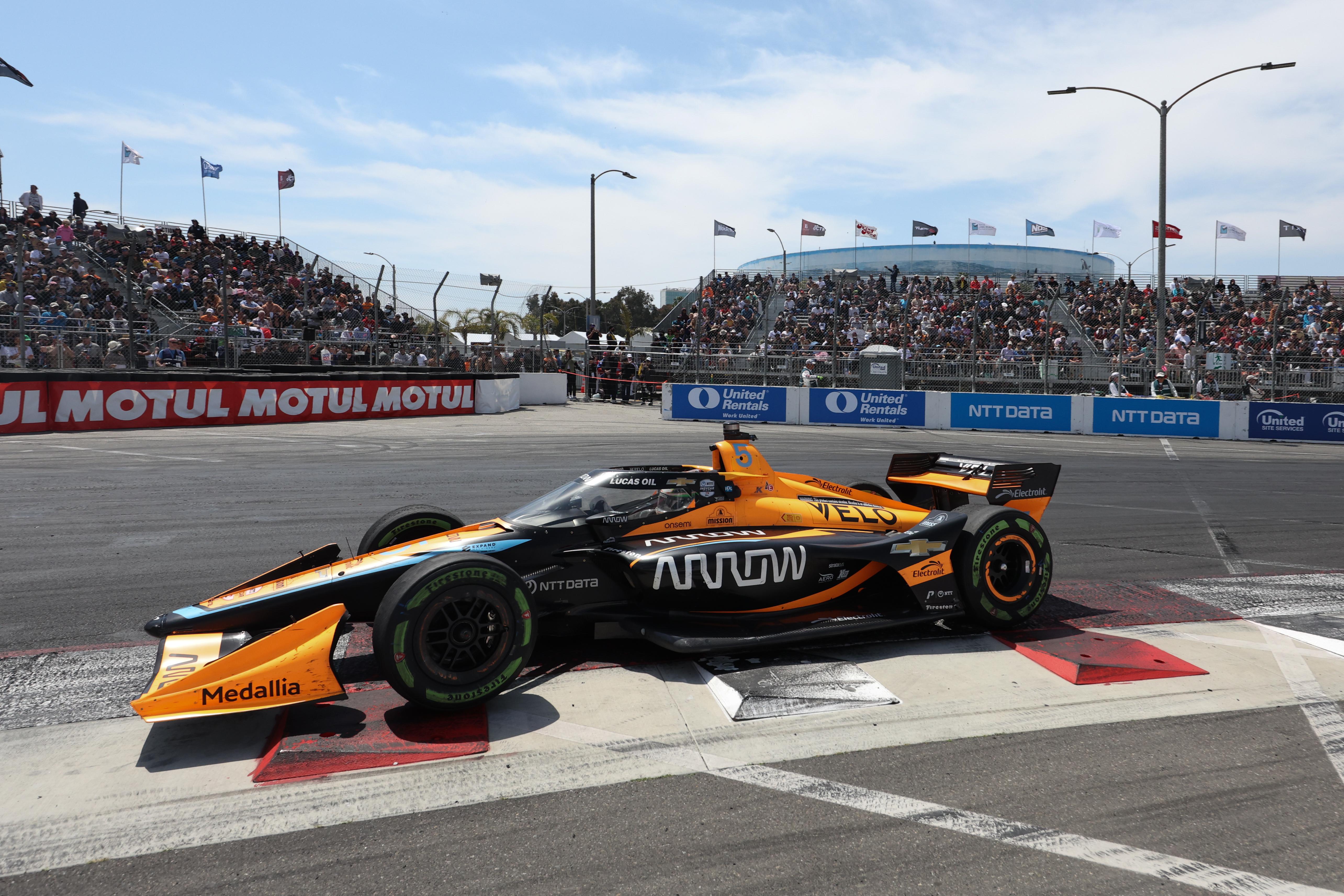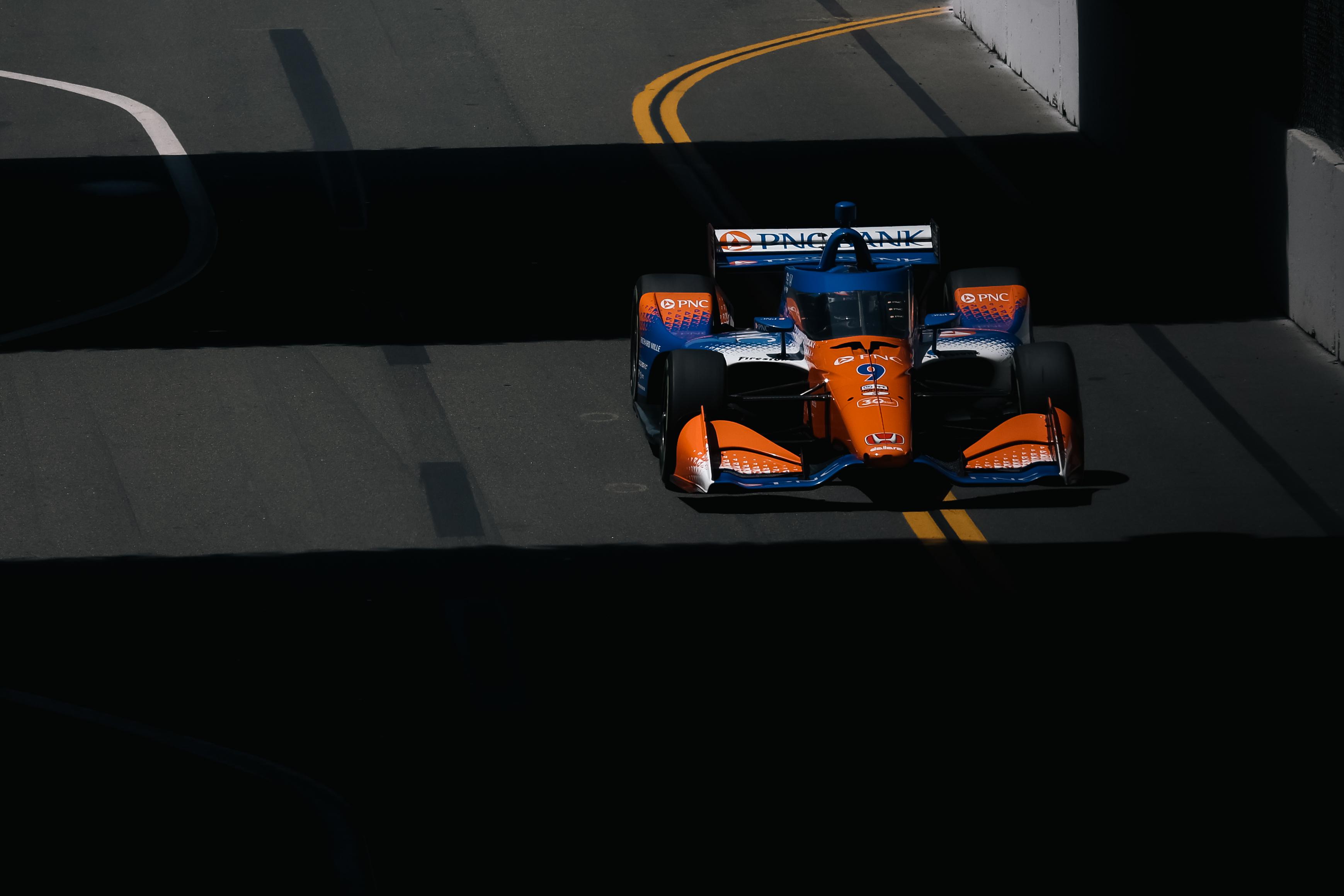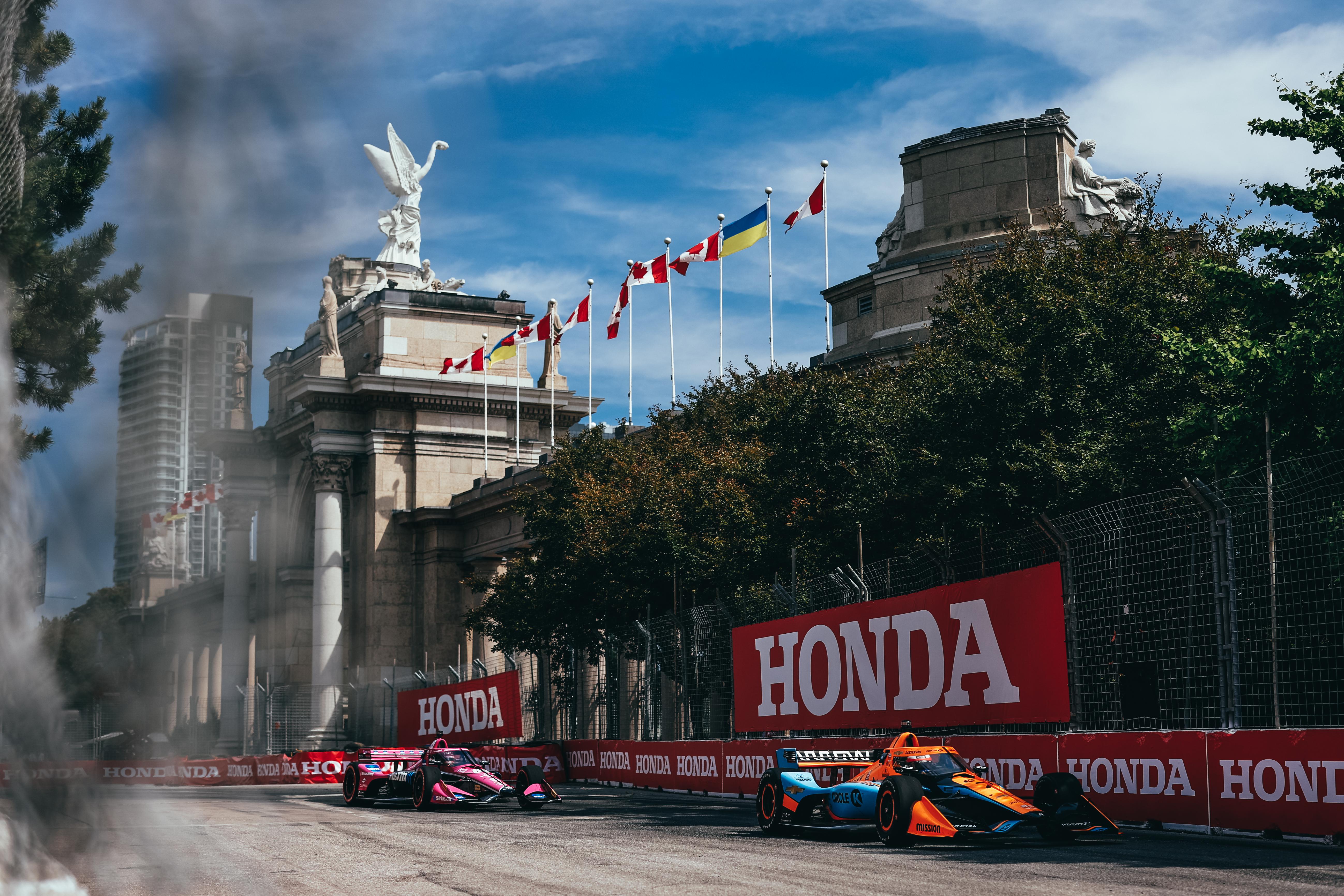Pato O’Ward’s refusal to apologise for crashing into Scott Dixon at Long Beach and Dixon’s “gloves are off” retort shone a light on how drivers are approaching IndyCar racing.
Is there a lack of respect among younger drivers coming into the series, or does Dixon need to race more like them?
The move in question was a complicated one because O’Ward came from very far back and ultimately crashed Dixon into the tyres. O’Ward also made the corner and there was a gap Dixon had left open.
It’s debatable whether Dixon could have backed off and lived to fight another lap, but he did leave a gap open, which is in part down to the wide line taken in that corner – the Turn 8 right-hander.
It’s clear few have the experience of Dixon, who started in IndyCar back in 2003.
However, there’s no doubt that the competition in the series is as good as it’s ever been and a long stint on this rules cycle means each top team has one or two drivers fighting for the championship.
The Race’s IndyCar Podcast host JR Hildebrand wonders if this is leading to more aggression in fighting for every last point, and in turn encouraging the kind of late braking move we saw O’Ward try on Dixon.
Hildebrand has raced in IndyCar since 2011 himself, and feels there is a divide in how drivers approach overtaking moves like O’Ward’s depending on their experience.
“Every position has more value basically now than it did 10 years ago, five years ago,” Hildebrand said on this week’s episode of The Race IndyCar Podcast.
“The difference that I see, in terms of the way the racecraft has evolved, is that 10 years ago, it was very rare that you put guys in positions where even if you were going to make the corner, that for sure they wouldn’t.

“Like that was kind of just generally a no-no and so it very rarely happened. You would have a Dario Franchitti up in your face after the race, if you had done that.
“And so I think what’s happened is you have a younger crop of drivers that didn’t really grow up with that being the case, they’re just hammering for every position, they’re running qualifying laps everywhere, every lap of the race.
“I think Pato is basically looking at that scenario, seeing Dixon slowing a lot to the apex to try to get the shot off, he knows that he can fill that gap.
“A little bit like Felix [Rosenqvist] on Alexander Rossi at Toronto last year, he just knows that he can brake deep enough to get to the apex basically at the same time that Dixon is going to get there.
"He just shoved me off."@FRosenqvist and @AlexanderRossi collide while battling for P4.
WATCH LIVE:
🦚: @PeacockTV
📲: INDYCAR App powered by NTT DATA – https://t.co/vyuISIyifv#INDYCAR // #IndyTO pic.twitter.com/HBKZORmwQh— NTT INDYCAR SERIES (@IndyCar) July 17, 2022
“I don’t think it’s on Pato’s radar or it doesn’t matter to him in the context of his overall perspective on racing in IndyCar that he’s going to force Scott into the wall.
“If you make that pass and make that manoeuvre from that far back without Scott Dixon planning for you to pass him, 10 times out of 10, either both of you crash or Scott Dixon crashes. But Scott ends up screwed on that deal one way or another.
“I guess that gives me sympathy for Scott’s perspective on this, which is, ‘We just didn’t really used to race this way, where even if you can get through the corner and you can get to the apex at the same time that I did, that I’m not going to make the corner and you’re just OK with me getting stuffed into the tyres’.

“Whereas I think Pato, I can sort of sympathise with his point of view on this which is, ‘I made it through the corner fine’.
“He didn’t make it through the corner fine because he made contact with Scott, he had enough grip and whatever to take the line, brake deep, he was not going to get a good exit out of the corner, if he had done that just in isolation, but he would have made it through OK. That’s where he’s at.
“For him to have just like absolutely zero concern whatsoever for the fact that he stuffed Scott Dixon into the tyres. I think that’s ultimately where we’re ending up with this.”
It’s clear Hildebrand sees both drivers’ perspectives equally. But the issue that he highlights that these drivers have two different codes of racing, is problematic for the series policing these incidents.
Dixon said “if this is how IndyCar wants us to race, then the gloves are off”.
I don’t think IndyCar necessarily sits there and looks at an incident like this and says: ‘this is how we want drivers to race’.
But it is actively encouraging this racing by not penalising drivers who have been aggressive to the point where you debate whether they’ve gone too far.

The Rosenqvist/Rossi Toronto incident is actually much worse and clear-cut as Rossi was just fired into the wall by Rosenqvist because the latter lost the rear momentarily under acceleration. But Rosenqvist got no penalty – just as O’Ward escaped sanction for the Dixon incident.
Josef Newgarden’s robust shoving of Romain Grosjean into the wall in Nashville is perhaps an example that this divide may be more down to the style and aggressiveness of the driver rather than the generation they came to IndyCar in.
Dixon has to take the precedents set in recent seasons and accept the gloves are in fact off. He needs to back out of these situations when he’s on the receiving end – O’Ward said that’s what he’s done in the past – but go after the other drivers more aggressively when the ball is in his court.
You may argue racing more aggressively is not in Dixon’s MO, but he might need to, to be on an even playing field with his rivals.
Being taken out in Long Beach ended a run of Dixon finishing every lap since the 2021 Gateway race, which is a spectacular statistic and proves the way he races in wheel-to-wheel combat is just fine. This incident wasn’t really his fault either.
But it’s how others race him that has changed. Next time, if he puts O’Ward in the wall in a similar scenario, O’Ward will have to take it on the chin, because that’s the behaviour that has been allowed and therefore encouraged by the series.
It’s perhaps more entertaining for the spectators and, if Dixon had backed out of the throttle to let O’Ward through, people would probably be lauding one of the best overtakes of the race for O’Ward.
In the alternate scenario, we have to ask if racing on IndyCar road and street courses is being done with enough respect not just for the points on offer for every position, but for the safety of the drivers, too.







